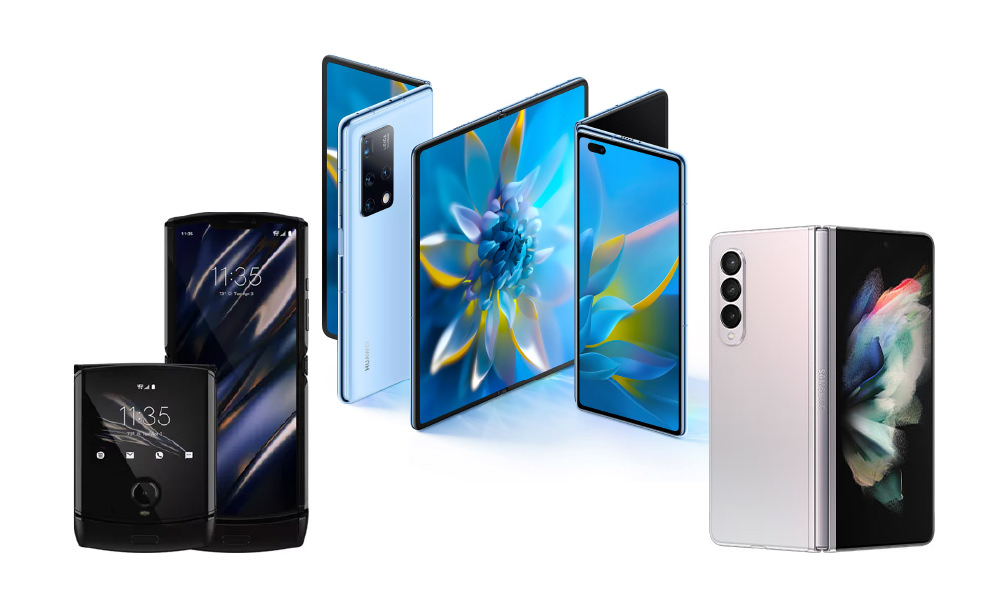The smartphone industry has long been defined by incremental upgrades—faster processors, sharper cameras, and slimmer bezels. But as innovation in traditional slab-style phones plateaus, a new era is dawning. Foldable and rollable smartphones are redefining portability and functionality, while emerging technologies like holographic displays and AI integration promise to revolutionize how we interact with our devices. Let’s explore what lies ahead.
The Rise of Foldable Smartphones
Foldable smartphones, once a futuristic concept, are now a reality. These devices feature flexible displays that bend without breaking, allowing screens to unfold into tablets or fold into compact sizes.
Current Examples
- Samsung Galaxy Z Series: The Z Fold 5 and Z Flip 5 dominate the market, offering tablet-like screens and clamshell designs.
- Google Pixel Fold: Combines Android optimization with a durable hinge.
- Huawei Mate X3: A sleek foldable with a near-seamless display.
Benefits
- Enhanced Multitasking: Larger screens enable split-view apps and desktop-like productivity.
- Portability: Compact folding designs fit easily in pockets.
- Versatility: Users switch between phone and tablet modes seamlessly.
Challenges
- Durability: Early models faced issues with creases and hinge mechanics. However, advancements like ultra-thin glass (UTG) and water-resistant designs are improving reliability.
- Cost: Foldables remain premium, with prices often exceeding $1,500.
- Software: Apps must adapt to dynamic screen ratios, though Android and iOS are increasingly foldable-friendly.
Rollable Smartphones: The Next Frontier
Rollables take flexibility further by expanding screens horizontally or vertically via a motorized mechanism. Unlike foldables, they eliminate creases and offer a seamless transition.
How They Work
Rollables house the display on a retractable spool. With a button or gesture, the screen extends—for example, from 6.5 inches to 8 inches.
Pioneers
- OPPO X 2021: A prototype showcasing a smoothly expanding OLED panel.
- TCL Rollable Concept: Features a roll-out display for tablets or compact phones.
Potential Benefits
- No Crease: The screen remains flat, avoiding foldable wear-and-tear.
- Customizable Screen Size: Users adjust display area based on needs.
- Space Efficiency: Compact bodies hide larger screens.
Challenges
- Mechanical Complexity: Motorized components risk mechanical failure.
- Dust and Debris: Retractable mechanisms need robust sealing.
- Battery Life: Larger screens demand more power, straining batteries.
Beyond Foldables and Rollables: What’s Next?
The future holds even bolder innovations:
1. Flexible and Transparent Displays
Screens could wrap around wrists or become invisible when off. Xiaomi’s Mi TV Lux Transparent Edition hints at smartphones with translucent displays for AR overlays.
2. Holographic Technology
3D holograms might replace touchscreens, enabling gesture-controlled interfaces. Companies like Looking Glass Factory are already prototyping consumer-friendly holographic displays.
3. AR/VR Integration
Smartphones could morph into AR glasses companions, projecting virtual interfaces onto real-world environments. Apple’s Vision Pro headset signals a shift toward mixed-reality ecosystems.
4. AI-Driven Personalization
On-device AI could optimize performance, camera settings, and battery usage in real time. ChatGPT-like assistants might handle tasks autonomously, from scheduling to content creation.
5. Sustainability Innovations
Modular designs, like Fairphone’s repairable phones, could reduce e-waste. Self-healing materials and solar-charging displays may also emerge.
Challenges and Considerations
While the future is exciting, hurdles remain:
- Cost: Cutting-edge tech will stay expensive until mass production scales.
- Durability: Flexible components must withstand daily wear.
- Software Adaptation: Apps and OSes need to support diverse form factors.
- Environmental Impact: New materials and shorter device lifespans could increase e-waste.
Conclusion
Foldables and rollables are just the beginning. As flexible displays, AI, and AR mature, smartphones will transform into adaptable, eco-conscious tools that blend seamlessly into our digital and physical worlds. While challenges like cost and durability persist, the industry’s trajectory points toward a future where our devices are as dynamic as our lives.
FAQs
1. What are foldable smartphones?
Foldables feature flexible screens that bend to transform between phone and tablet sizes, like the Samsung Galaxy Z Fold.
2. Are foldables durable?
Modern foldables use ultra-thin glass and improved hinges, making them more resilient than early models. However, they’re still pricier to repair.
3. How do rollables differ from foldables?
Rollables expand screens via a retractable mechanism instead of folding, avoiding creases and offering adjustable screen sizes.
4. Are these devices affordable?
Currently, foldables and rollables are premium products (starting at ~$1,000), but prices may drop as tech matures.
5. What’s next after foldables and rollables?
Expect holographic displays, AI-integrated AR glasses, and eco-friendly modular designs to shape the next decade.
Read more Article about Future Trends & News
